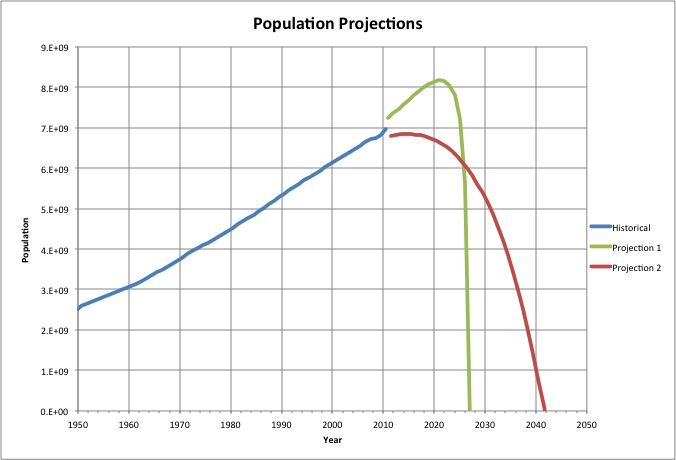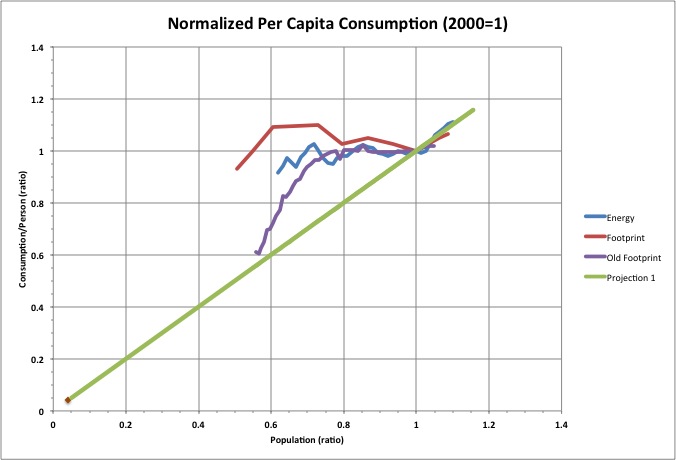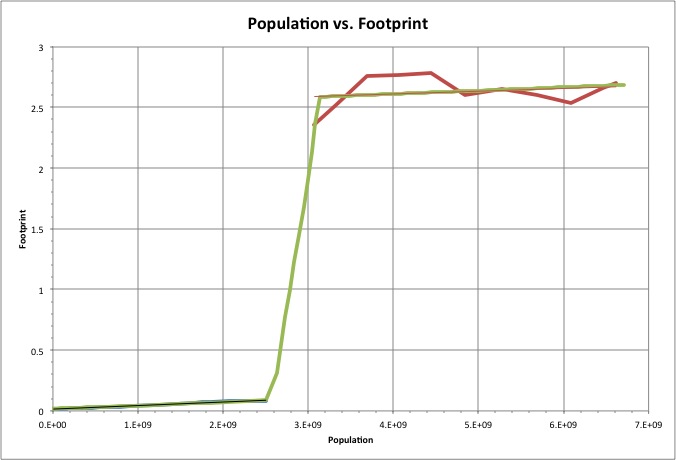
Here are two seperate projections of the future world population, beginning in 2011.
Projection 1 uses the Population-Consumption model, which assumes that consumption depends on transactions between everyone in the population.
Projection 2 assumes that per capita consumption is constant throughout time, and that population is dependent on the cumulative consumption throughout civilization.
In each case, population peaks soon and then crashes.

Per capita consumption is compared here for world energy and ecological resources (global ecological footprint).
Energy is from the latest World Bank data (World Development Indicators & Global Development Finance, 4/14/2011).
Footprint is the Global Footprint Network's current definition of the global ecological footprint (HUMANITY'S ECOLOGICAL FOOTPRINT AND BIOCAPACITY THROUGH TIME, 2010).
Old Footprint uses the global ecological footprint defined in the World Wildlife Fund's Living Planet Report 2006, which was fundamental to the formulation of the Population-Consumption model (whose projected per capita consumption is shown as Projection 1).

In the newest version of the population consumption model, consumption and population are related according to a simple formula:
C = Mt * P2 / 2 + Me * P
Where C is consumption, P is population, Mt is transaction mass, and Me is extraction mass. See the blog post Discontinuity for more explanation.
The per capita consumption, represented here by the ecological footprint F, is therefore:
F = Mt * P / 2 + Me
where:
Mt = 5.5E-11
Me = 1.80E-02 (P ≤ 2.64E+09)
Me = 2.50 (P ≥ 3.14E+09)